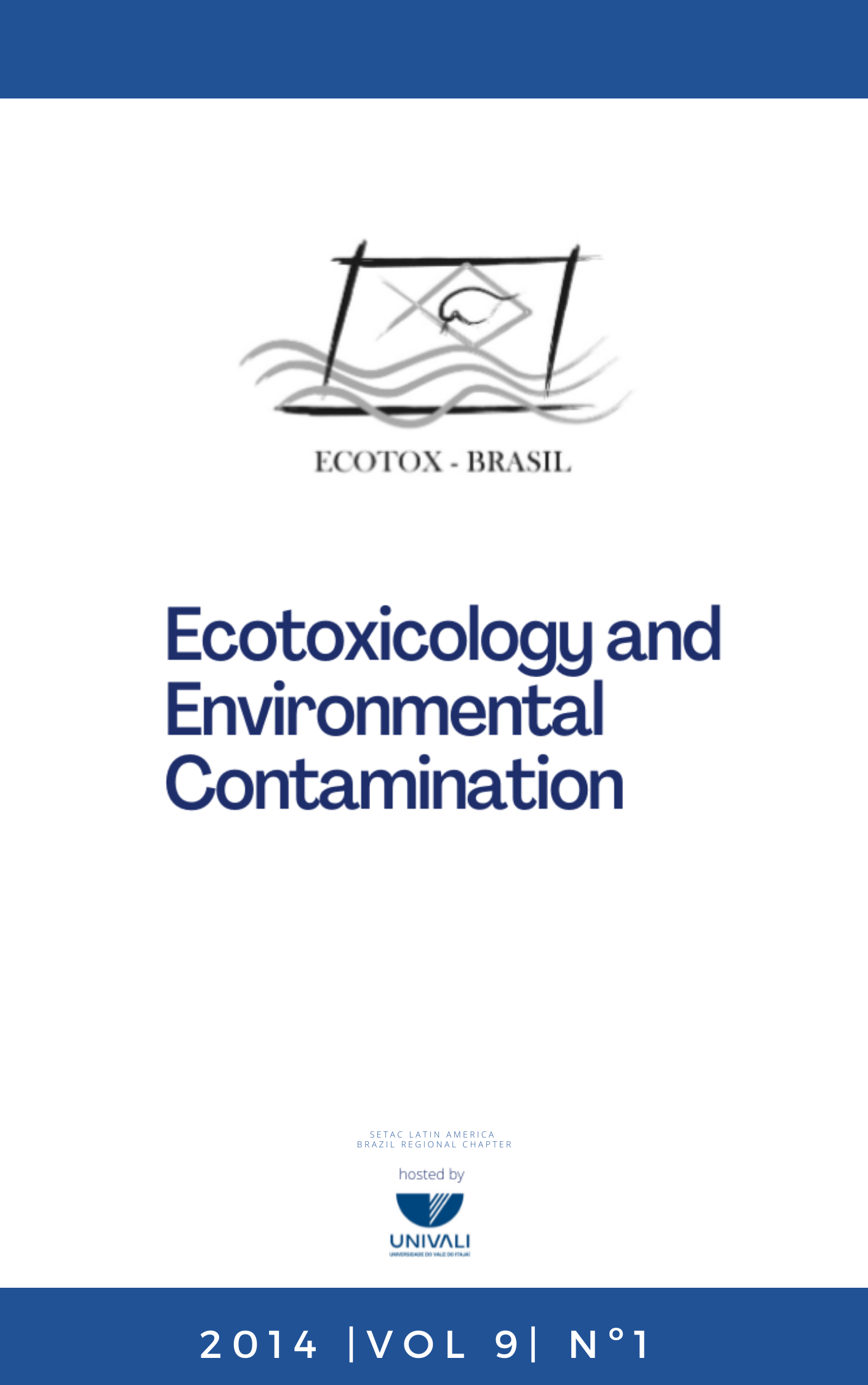Differential susceptibility of cladoceran species to a saxitoxin-producer strain of Cylindrospermopsis raciborskii (cyanobacteria)
DOI:
https://doi.org/10.5132/eec.2014.01.005Abstract
Toxic cyanobacteria can affect several organisms, including herbivorous zooplankton, as cladocerans. In this study we tested the hypothesis that cladoceran species of different body size, origin and degree of exposure to toxic cyanobacteria would respond differently to a saxitoxin(STX)-producing strain of the cyanobacterium Cylindrospermopsis raciborskii (CYRF-01). Newborns were exposed to increasing concentrations of the strain CYRF-01 mixed to a fixed proportion of green algae for 14 days and survivorship, age at first reproduction, clutch size, total offspring and the intrinsic rate of population increase (r), as a measure of fitness, were estimated. Different responses to the strain CYRF-01 were observed, with Daphnia similis (temperate, large size) being more sensitive, followed by Moina micrura (tropical, small size), both presenting symptoms of decreased fitness and paralysis. While Ceriodaphnia richardi (tropical, small size) D. gessneri (tropical, medium size) and Diaphanosoma spinulosum (tropical, small size) showed neither of these symptoms, the later species showed even increased fitness in the cyanobacterial treatments relative to control with green algae, suggesting not only a greater resistance to this strain, but also that it can serve as a nutritional supplement for this cladoceran. In conclusion, the results showed that while some cladocerans species may be negatively affected in their fitness, others may be not affected at all or even utilize STX-producer cyanobacteria as a complementary resource. This suggests that responses of cladocerans to toxic cyanobacteria in nature may vary with species and that the presence of toxic cyanobacteria may shape zooplankton communities to the dominance of more tolerant herbivorous species.Downloads
Downloads
Published
How to Cite
Issue
Section
License
Copyright © 2006 ECOTOX-Brasil
Copyright notice: It is a condition for publication that manuscripts submitted to this journal have not yet been published and will not be simultaneously submitted or published elsewhere. By submitting a manuscript, the authors agree that copyright for their article is transferred to the Sociedade Brasileira de Ecotoxicologia (ECOTOX-Brasil) if and when the article is accepted for publication. The copyright covers the exclusive rights to reproduce and distribute articles, including reprints, photographic reproductions or any other reproduction of a similar nature, including translations. No part of this publication may be reproduced, stored in a retrieval system or transmitted in any form or by any means, electronic, mechanical, photocopying, recording or otherwise, without permission of the publisher.
Notice: While every effort is made by the EEC, editors and editorial board to see that no inaccurate or misleading data, opinions or statements appear in this journal, they wish to make it clear that the contents of the articles and advertisements published herein are the sole responsibility of the contributors or advertisers concerned. Accordingly, the EEC, the editorial board and editors and their respective employees, officers and agents accept no responsibility or liability whatsoever for the consequences of any inaccurate or misleading data, opinion or statement.




